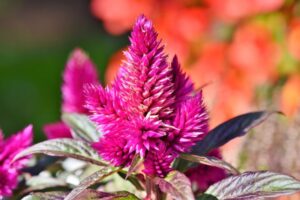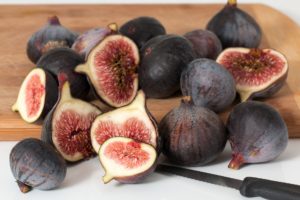To help you cultivate a serene retreat, we’ve curated a list of trees that are well-suited for compact gardens. Each tree offers something unique – whether it be stunning foliage, beautiful blooms, or intriguing bark. Let’s explore these ideal candidates for small backyards.
Japanese Maple (Acer palmatum)
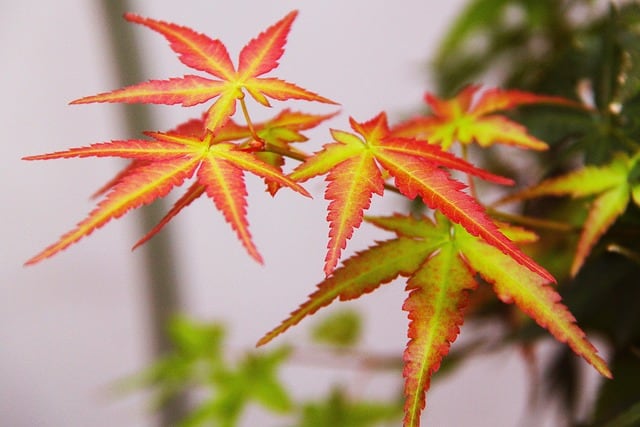
One of the most beloved trees for compact gardens is the Japanese Maple, known for its delicate foliage and graceful form. Available in various cultivars, its leaves range from deep purples to vibrant greens or warm reds. The Japanese Maple’s size often reaches between 10 to 25 feet, making it an excellent choice for those with limited space.
This tree thrives in a partially shaded spot, protecting its leaves from scorching sun and strong winds. With its sweeping branches and stunning autumn colors, it serves as a focal point in any landscape. Furthermore, it provides year-round beauty; the spring foliage unfurls like delicate lace, while the fall spectacle transforms the landscape into a canvas of fiery colors.
When planting a Japanese Maple, ensure well-drained, acidic soil and regular watering during dry spells. Its ornamental qualities make it a beautiful addition to any backyard where elegance reigns.
Smoke Tree (Cotinus coggygria)
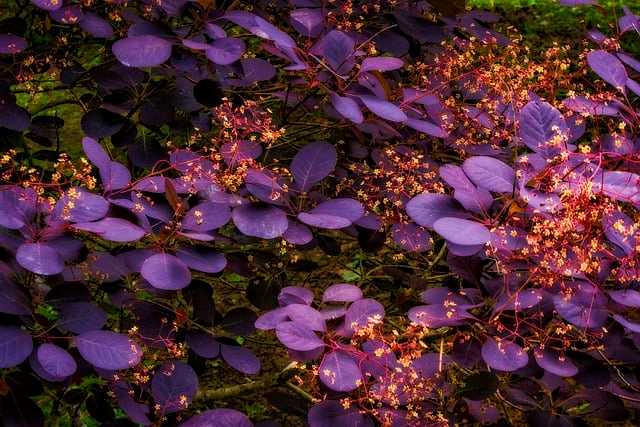
For those looking for unique, dramatic foliage, the Smoke Tree is a showstopper. This deciduous shrub or small tree typically grows to about 10 to 15 feet and gets its name from the billowing, smoke-like clusters of flowers that cover its branches in early summer. The gray-green leaves can exhibit stunning shades of purple and yellow in fall, depending on the cultivar selected.
One of the standout features of the Smoke Tree is its resilience. It tolerates poor soils and dry conditions, which makes it an excellent choice for low-maintenance gardens. The ‘Royal Purple’ variety boasts rich, dark leaves that truly stand out against a clear blue sky. However, it’s important to note that while the Smoke Tree can handle drought, it does best with adequate rainfall or supplemental watering during dry spells.
If you’re looking for a tree that adds intrigue and conversation to your backyard, the Smoke Tree is a perfect choice.
Olive Tree (Olea europaea ‘Arbequina’)
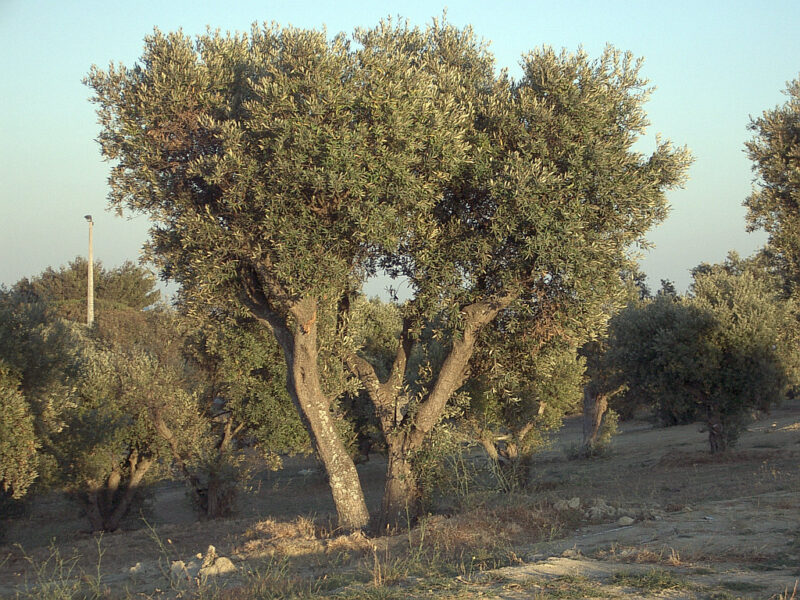
Imagine the charm of a warm Mediterranean climate right in your backyard with the Olive Tree. The ‘Arbequina’ variety is particularly well-suited for small spaces, typically growing between 8 and 10 feet. Known for its silvery-green foliage and gnarled branches, it not only provides aesthetic appeal but also produces delicious olives.
When planting an Olive Tree, ensure it’s placed in full sun and well-drained soil; it thrives in hot, dry conditions. It’s worth noting that while olive trees are quite drought-resistant once established, they do require watering during the fruiting season for optimal yield.
The ‘Arbequina’ Olive Tree is hardy and disease-resistant, making it perfect for beginners. Plus, its unique appearance creates a graceful silhouette that perfectly complements other landscape elements.
Weeping Cherry (Prunus pendula)
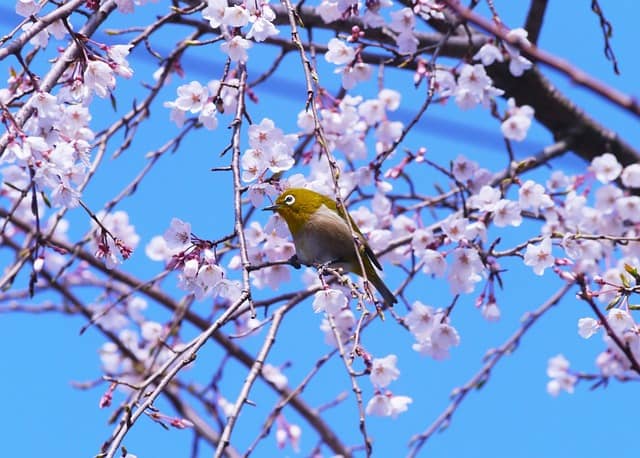
A garden doesn’t feel complete without the enchanting beauty of a Weeping Cherry tree. This majestic tree grows about 20 feet tall, featuring cascading branches laden with delicate pink or white blossoms in spring, which create a picturesque scene reminiscent of a fairy tale.
The Weeping Cherry thrives in full sun, preferring well-drained soil, and it has a distinct natural beauty that demands attention throughout the growing season. Its dark green leaves add contrast and elegance before transforming to brilliant shades of gold and orange in the fall.
Planting a Weeping Cherry creates layers of texture and color in small gardens, ensuring your space feels both lush and vibrant. Beyond its beauty, this tree also promotes a calming ambiance, making your backyard a perfect escape.
Korean Lilac Tree (Syringa meyeri ‘Palibin’)
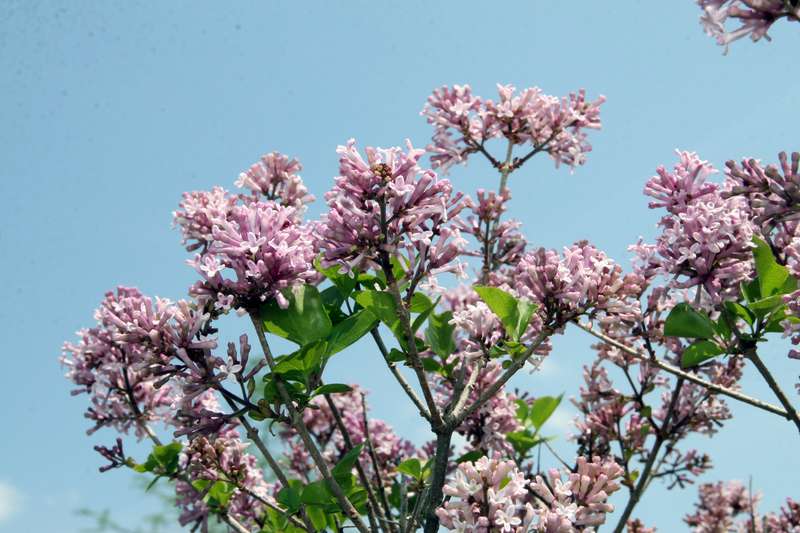
The Korean Lilac Tree is a delightful, compact tree that blooms fragrant clusters of lavender-purple flowers in late spring. Typically reaching a height of about 6 to 8 feet, it’s perfect for small spaces, allowing you to enjoy vibrant color and delightful scents without taking up too much room.
This tree thrives in full sun and is forgiving when it comes to poor soil conditions. Its rounded shape and glossy green foliage add structural interest throughout the growing season, which turns to a rich yellow in the fall. One of the key benefits of the Korean Lilac is its resistance to pests and diseases, making it a low-maintenance addition to your backyard.
This evergreen beauty also attracts pollinators, supporting local ecosystems while enhancing your landscape.
Amur Maple (Acer ginnala)
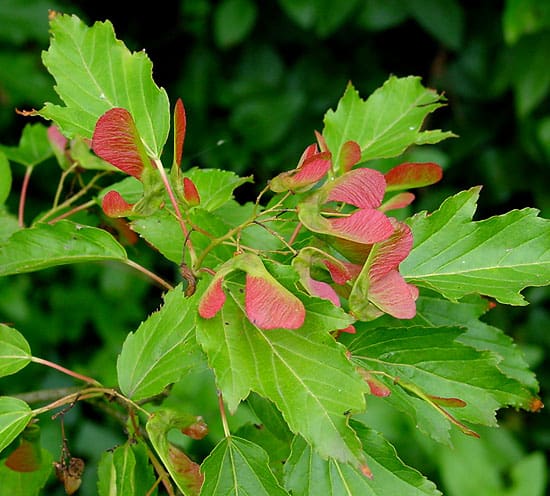
If you’re in search of an exceptional small tree with seasonal interest, the Amur Maple stands out. Reaching heights of 15 to 20 feet, this tree offers stunning yellow and red colors in the fall, transforming your backyard into a vibrant landscape.
The Amur Maple is tolerant of a variety of soil conditions, including clay and sandy soils, making it ideal for diverse settings. Its compact form and densely branched structure make it a fantastic choice for providing privacy or creating a cozy sanctuary.
During the spring, the tree produces clusters of beautiful pale yellow flowers, adding another layer of beauty. Planting an Amur Maple not only enhances the aesthetics of your backyard but also offers year-round charm and wildlife habitat.
Fringe Tree (Chionanthus virginicus)
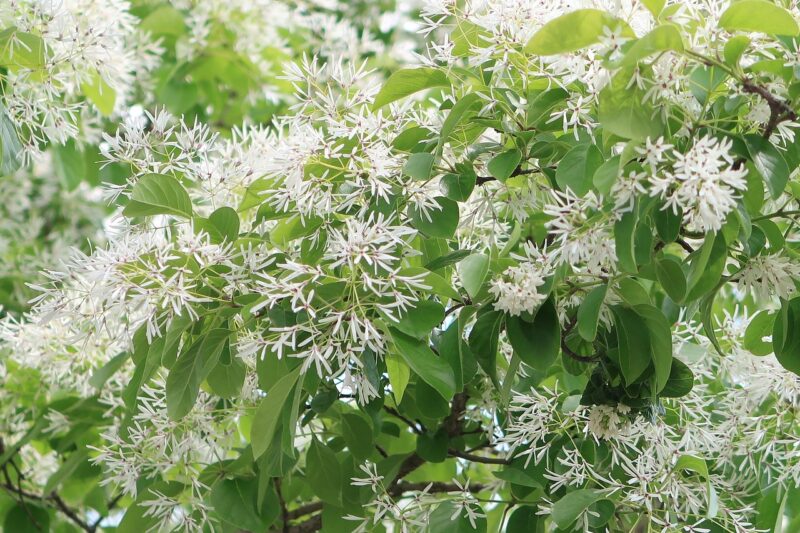
The Fringe Tree is known for its stunning, fragrant white flowers that appear in late spring. Ranging in height from 12 to 20 feet, this tree adds elegant beauty and visual interest to smaller backyards. The long, fringe-like blooms create a soft, whimsical look that enhances the surroundings.
Growing best in well-drained soil and full sun to partial shade, the Fringe Tree is relatively low-maintenance. Its dark green leaves turn a pleasing shade of yellow in the fall, providing a colorful transition as summer fades.
As a bonus, its fruit attracts birds, making it a desirable space for birdwatching in your backyard. Enhance your garden’s sensory experience with the lovely scent and visual appeal of this ornamental tree.
Dwarf Magnolia (Magnolia grandiflora ‘Little Gem’)

If you dream of having magnolia blooms without the space requirements of a traditional magnolia tree, the ‘Little Gem’ is the answer. This dwarf variety typically grows to about 15 feet tall, making it well-suited for smaller spaces while still providing the iconic, fragrant white blooms that magnolia trees are famous for.
The ‘Little Gem’ thrives in full sun and well-drained soil, providing lush, evergreen foliage year-round. Its compact form allows for easy integration into smaller landscape designs, while still delivering the grandeur of larger magnolias.
Beyond aesthetics, this versatile tree provides privacy and wind protection, proving its functionality in your backyard design. The delightful blossoms bring joyous spring color and fragrance to your outdoor haven.
Japanese Stewartia (Stewartia pseudocamellia)
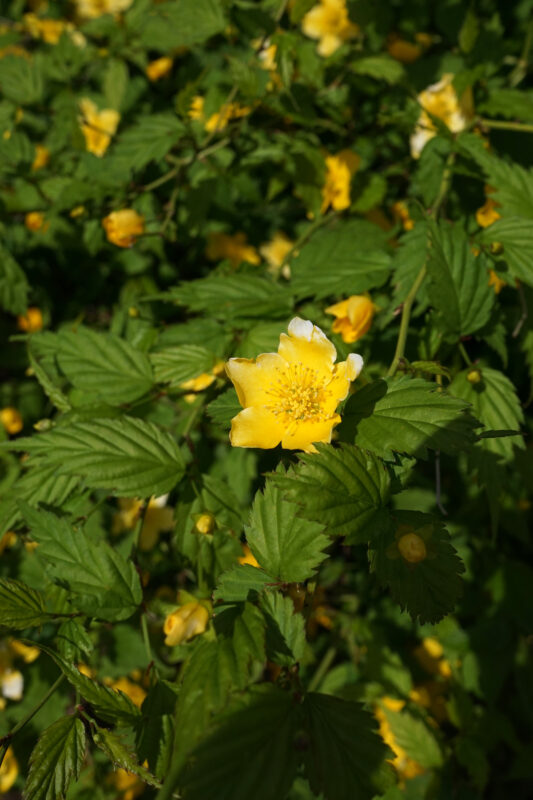
The Japanese Stewartia is a breathtaking tree that combines beauty with versatility, making it a fantastic choice for small backyards. Typically reaching heights of 20 to 30 feet, this small tree is revered for its stunning, creamy white flowers that resemble camellias, blooming in summer.
The Japanese Stewartia showcases ruffled petals and beautiful orange stamens, creating an eye-catching display. Beyond its flowers, the tree offers year-round interest with its smooth, peeling bark and attractive oval leaves that transform to spectacular shades of red and purple in the fall.
Ideal for well-drained, acidic soils, it thrives in partial to full shade. This grace-filled tree enhances any small garden with its visual intrigue, seasonal blooms, and captivating bark.
Redbud (Cercis canadensis ‘Ace of Hearts’)
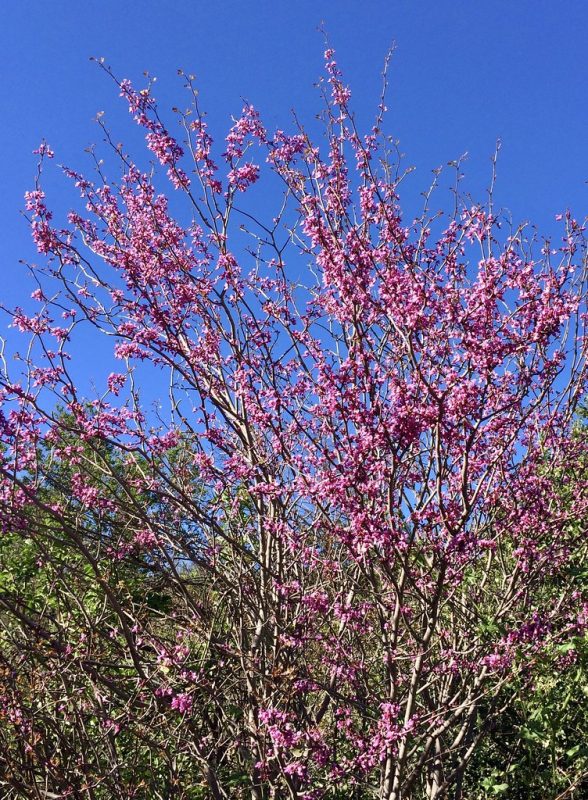
The ‘Ace of Hearts’ variety of Redbud is a compact tree that produces stunning heart-shaped leaves and vibrant pink flowers in early spring. Typically reaching around 4 to 6 feet, it’s perfect for small spaces while still offering a bold display of color.
In addition to its enchanting flowers, the Redbud features unique bark and eye-catching leaf shapes that enhance your landscape. The ‘Ace of Hearts’ is adaptable to a range of soil types and performs well in partial to full sun.
With its playful character and graceful appearance, planting a Redbud provides an enchanting pop of color that will bring delight during the early growing season and create an inviting focal point all year long.
Crape Myrtle (Lagerstroemia ‘Dynamite’)
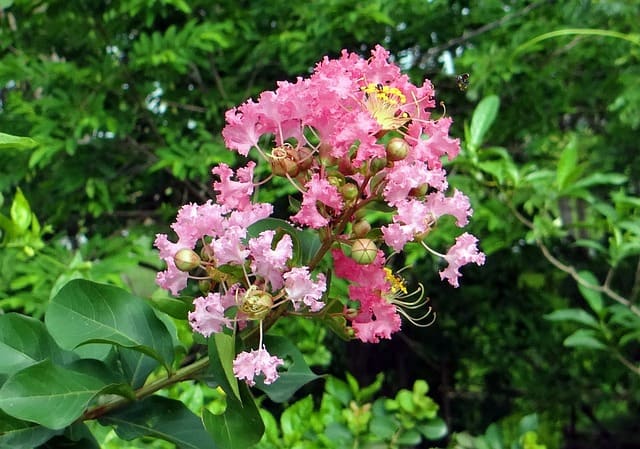
Crape Myrtle is known for its vibrant summer blooms and stunning bark, making it a popular choice for gardens of all sizes. The ‘Dynamite’ variety grows to about 10 to 15 feet in height and produces bursts of deep red flowers that attract pollinators and enliven the landscape.
Highly adaptable, Crape Myrtle thrives in full sun and can withstand humidity, drought, and various soil conditions. Its smooth, exfoliating bark adds interest during the winter months when the tree is bare, making it a year-round asset to your garden.
With a long blooming period from summer to fall, the Crape Myrtle ensures your backyard stays vibrant and colorful, proving its worth as a centerpiece.
Serviceberry (Amelanchier ‘Autumn Brilliance’)

If you desire a tree that offers beauty in every season, the Serviceberry is a wonderful option. The ‘Autumn Brilliance’ variety grows to about 15 to 25 feet, producing clusters of delicate white flowers in the spring followed by small, edible berries in the summer.
Its leaves change to brilliant shades of gold and orange in the fall, ensuring visual interest year-round. This deciduous tree prefers well-drained soil and thrives in full sun to partial shade, making it versatile for small gardens.
The serviceberry not only enhances your backyard but also attracts birds and wildlife, celebrating the interconnectedness of your ecosystem within a limited space.
Dwarf Japanese Snowbell (Styrax japonicus ‘Snowcone’)
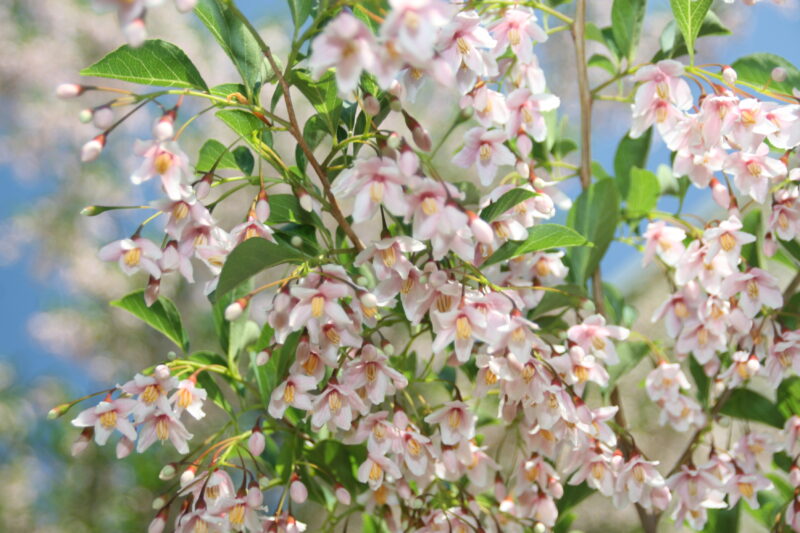
The Dwarf Japanese Snowbell, with its graceful appearance and delicate flowers, is perfect for small gardens. Typically reaching heights of 8 to 10 feet, it blooms in late spring, showcasing clusters of charming, bell-shaped white flowers that emit a delightful fragrance.
It thrives in well-drained soil and partial shade, making it suitable for a variety of planting locations. Its glossy green leaves turn beautiful shades of yellow in the fall, adding interest even after the blooms fade.
The Snowbell’s compact size and captivating blooms make it a whimsical addition to your backyard, bringing soothing charm and serenity to your outdoor haven.
Golden Chain Tree (Laburnum x watereri ‘Vossii’)
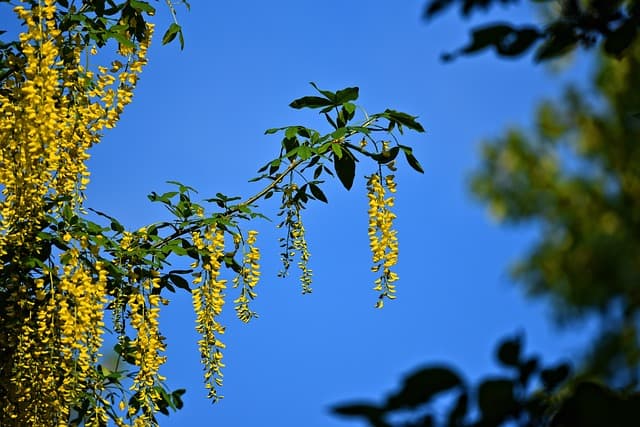
The Golden Chain Tree is known for its stunning cascades of yellow flowers that hang from its branches in late spring. This tree typically grows around 15 to 25 feet and is best suited for small gardens where its striking blooms can take center stage without overwhelming the space.
Preferring full sun and well-drained alkaline soil, the Golden Chain Tree is relatively easy to grow. It has a unique, upright branching habit that provides architectural interest even when not in bloom.
This enchanting tree is a showstopper throughout the spring; however, it’s essential to keep it away from pets and small children, as its seeds are toxic if ingested.
Paperbark Maple (Acer griseum)
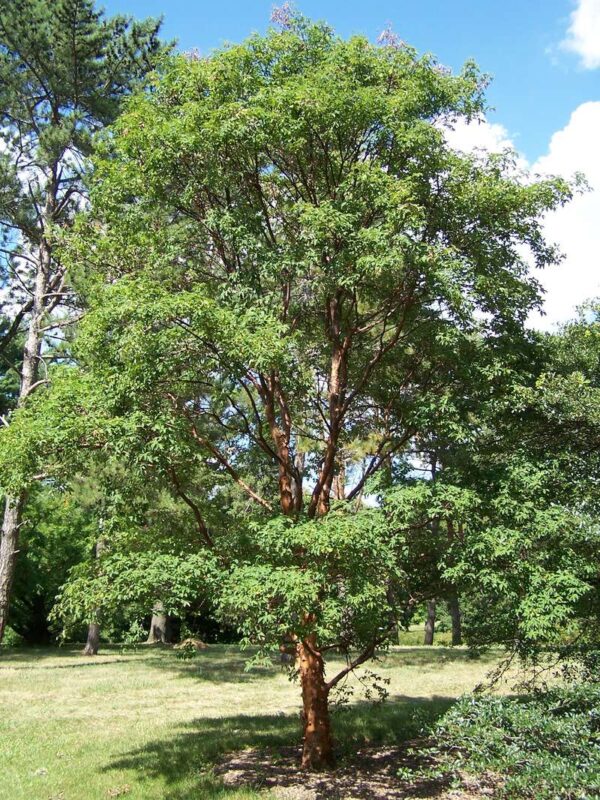
The Paperbark Maple is a unique specimen tree prized for its distinctive, peeling bark, which exudes a warm, cinnamon-like hue. As a small tree, it typically grows to about 15 to 20 feet in height, making it an attractive option for compact spaces.
In addition to its remarkable bark, the Paperbark Maple features beautiful trifoliate leaves that turn to an eye-catching red in the fall. This tree prefers well-drained, acidic soil and thrives in full sun.
The Paperbark Maple not only adds a touch of elegance to your backyard but also provides a habitat for local wildlife. Its year-round aesthetic appeal will ensure it remains a focal point in your landscape.
Dwarf Ginkgo (Ginkgo biloba ‘Jade Butterfly’)
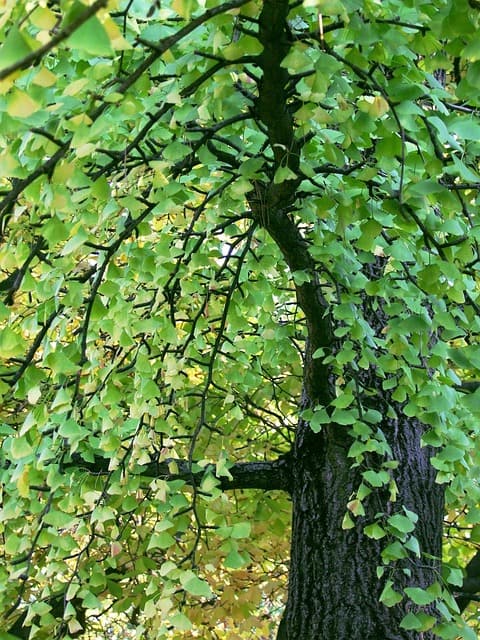
For a tree that brings unique foliage and historical significance, consider the Dwarf Ginkgo. This small tree reaches about 10 to 20 feet in height and features distinctive, fan-shaped leaves that turn a brilliant yellow in the fall.
Not only is the Dwarf Ginkgo visually appealing, but it is also incredibly resilient and is known for its tolerance to pollution, drought, and pests. It thrives in various soil types and prefers full sun, making it another low-maintenance option for small backyards.
The unique, fan-like shape of the leaves adds extraordinary character to your garden, ensuring it becomes a talking point amongst friends and family.
Eastern Redbud (Cercis canadensis ‘Ruby Falls’)
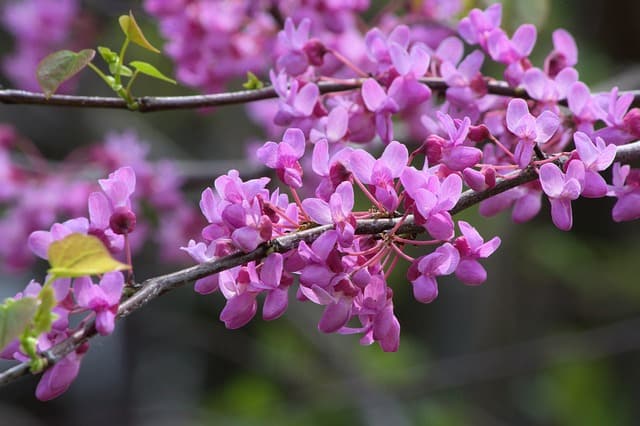
The ‘Ruby Falls’ Eastern Redbud is a truly stunning option for small gardens. With its graceful, weeping branches and deep purple foliage, this small tree generally grows to about 5 to 7 feet, providing alluring beauty without overwhelming your space.
In early spring, it produces clusters of small pink flowers along its branches, creating a burst of color before the leaves fully develop. This tree adapts well to various soil types and enjoys full sun to partial shade, making it a versatile addition to your garden.
The ‘Ruby Falls’ Eastern Redbud provides a unique structure that brings vertical interest, beauty, and a sense of tranquility to your backyard.
Lavender Twist Weeping Redbud (Cercis canadensis ‘Covey’)
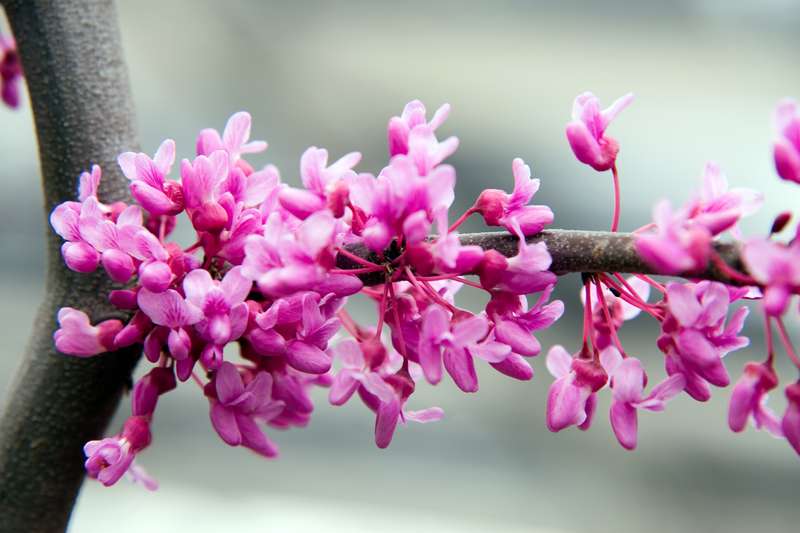
A captivating variety of the Eastern Redbud, the Lavender Twist Weeping Redbud offers a truly unique silhouette for smaller landscapes. With its elegantly twisting branches and stunning lavender-pink blooms in spring, this tree reaches a manageable height of 5 to 6 feet, perfect for tight spaces.
The branching habit creates an enchanting display that can serve as a captivating focal point in your garden. It thrives in well-drained soil and prefers full sun or partial shade, which allows it to reach its full potential.
This tree’s whimsical appearance adds charm and allure that can be appreciated throughout all seasons, as it offers beautiful foliage and a delightful flowering display.
Dwarf Weeping Crabapple (Malus ‘Spring Rain’)

A lovely choice for small gardens, the Dwarf Weeping Crabapple is known for its cascading branches and pink flowers that bloom throughout the spring. Generally growing to about 5 to 6 feet, this tree offers a stunning display and a sweet fragrance that attracts pollinators.
This hardy tree prefers full sun and is tolerant of various soil types, making it easy to care for in different conditions. Beyond its beautiful blooms, the Dwarf Weeping Crabapple produces small fruits that can add interest to your landscape, even drawing in birds eager for a snack.
With its enchanting weeping form and seasonal displays, this tree lends beauty and grace to your small backyard while providing an excellent habitat for wildlife.




